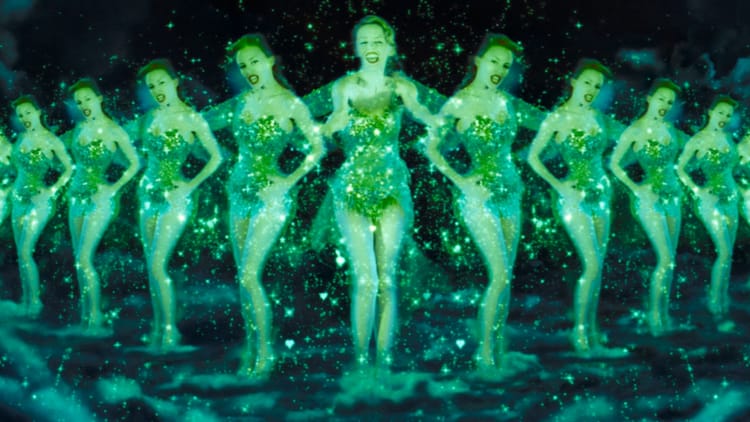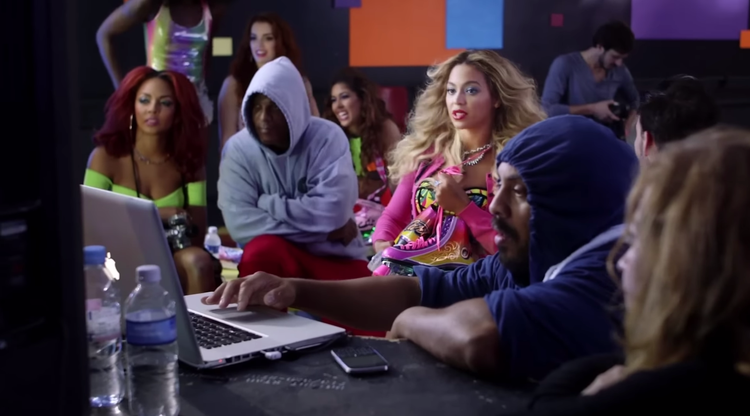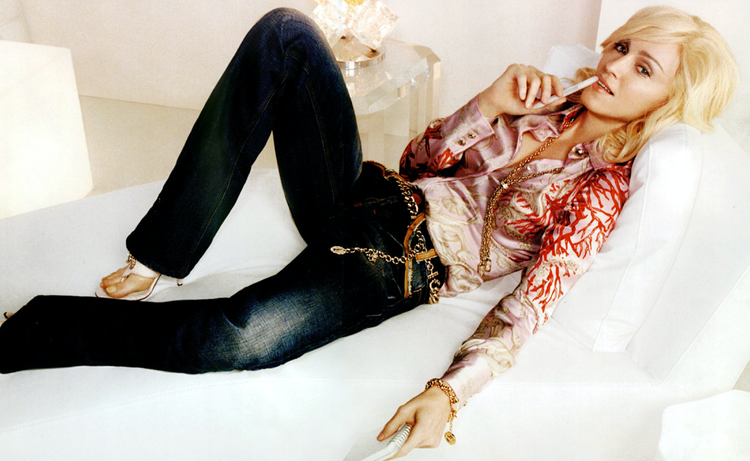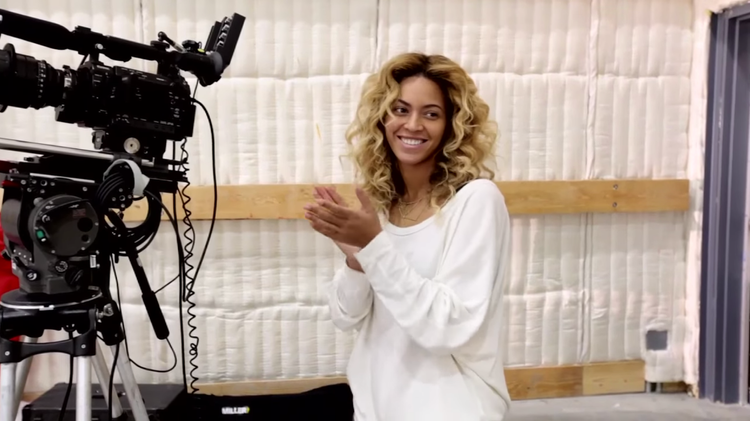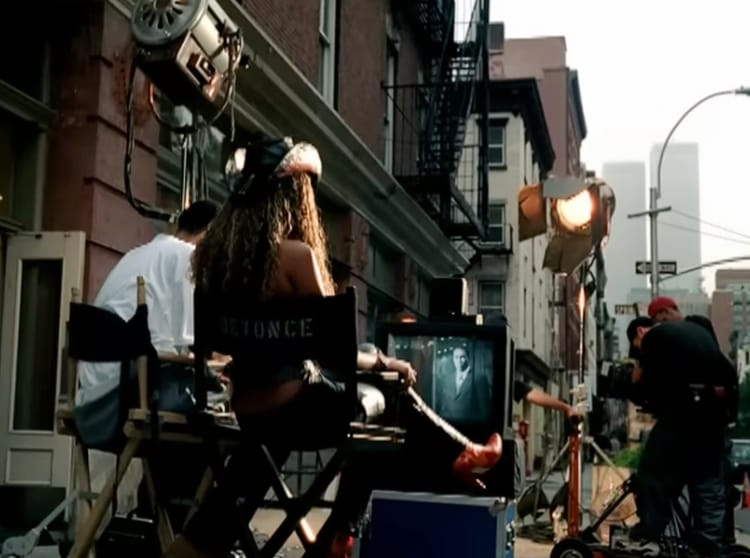Revisiting 'High by the Beach,' Lana Del Rey’s Thesis Statement on Fame, on its Fifth Birthday
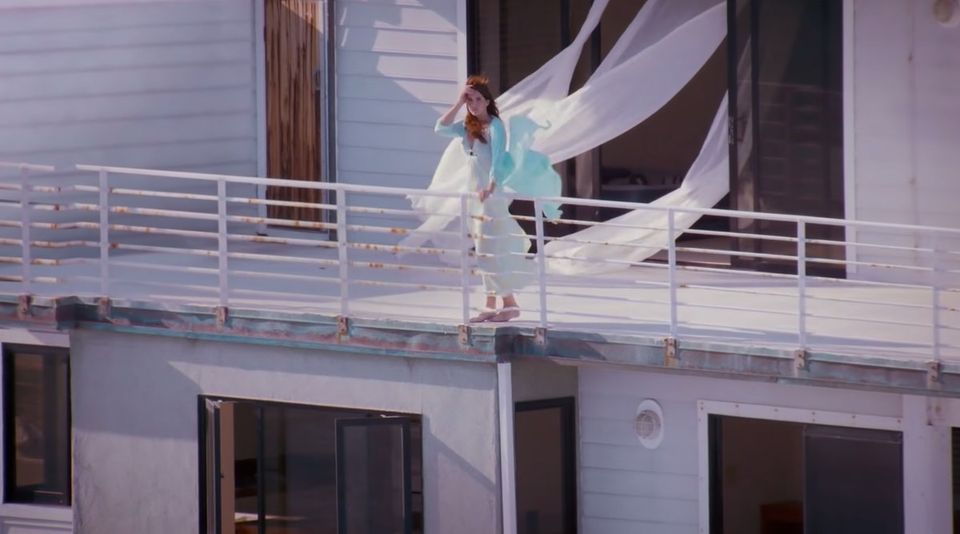
In 2018, I went with two friends to see Lana Del Rey live at Toronto’s Scotiabank Arena. She was here on her LA to the Moon Tour, the one that supported Lust for Life (2017). My friends and I had all been fans since before Born to Die (2012), an album that for us was synonymous with being bored and on Tumblr and in high school. I unfortunately can’t remember what it was called, but I at one point ran—alongside a couple others—a joint Lana/Marina Diamandis blog, which was just photos of both women that I liked. Neither was a household name yet (excepting the two weeks following Lana’s infamous SNL performances), and that was very much the sell for us; it was like being in a little club. To some degree, it was also an escapism thing, at least for me. I couldn’t even remotely relate to the emotions and situations described in either artist’s music, but they were significantly more exciting than the ones that characterized my totally stable, extremely well-behaved adolescent life.
So, six years later, I bought tickets for my friends and I to see Lana together—partly for nostalgic reasons, as we honestly hadn’t hung out that much since high school, but also because my fandom hadn’t wavered in that time. I enjoyed the show, but the IRL-ness of the whole thing was more jarring than I’d been expecting. To our right was a woman eating a massive salad, one that had to have been smuggled into the venue. Directly in front of us was a 20-something guy with bleached hair, cozying up to a much older date and audibly calling him “daddy.” During “Video Games,” a guy in the floor section got down on one knee and proposed to his girlfriend. I went home feeling like I’d just read a dozen people’s diaries. But I also found it curious that Lana had chosen to do an arena tour—money aside, of course—since the show itself seemed designed for a more intimate setting. She had two dancers and some palm trees with her on stage, and wore the same thing the entire night. It was almost like she was trying to have the best of both the pop and alt worlds at once.
Lana has always seemed interested in containing multitudes, and perhaps eschewing labels. “My musical influences have stayed the same for a long time,” she says in an early video interview. “I really like Nirvana. I love Frank Sinatra… Elvis, Bob Dylan, and… you know, like Eminem. I like all the greats from every genre, just the masters of every genre.” Born Elizabeth Grant, she goes by a stage name (not even the first one of her career) and is an instantly recognizable Halloween costume, but you’re not allowed to reduce any of this to her having a “persona.” She took issue with that term in a 2015 NME cover story, insisting, “I just put music out under a different name with a fully realised sound and texture.” Then, last September, she zeroed in on it in a largely positive essay about Norman Fucking Rockwell! (2019). “Never had a persona. Never needed one. Never will,” she tweeted at NPR’s Ann Powers on Twitter, among other Lana-isms. (I unfortunately always read that tweet in this voice.)
I love Powers, to the extent that I actually gifted her most recent book to the professor who ignited my scholarly interest in music videos. She’s written that she was fine during the whole thing—“It was pretty wild to see my feed under viral strain, but not that difficult to just take the app off my phone and walk away for a while”—but I still hated that Lana had sicced nearly 10 million followers on someone who’d enjoyed her album. As Spencer Kornhaber also pointed out at the time, “Del Rey’s attack came in a year when musicians have seemed especially defensive. Lizzo lashed out at a mixed take on her new album, Ariana Grande blasted ‘the blogs’ as ‘unfulfilled’ and ‘purposeless,’ and Chance the Rapper suggested that his skeptics wanted him to die.”
In “Coachella — Woodstock in My Mind,” a song from Lust for Life, Lana sings, “Critics can be so mean sometimes.” It’s a lyric that gets stuck in my head a lot for no reason, and is probably what I’d title a book chapter on her fraught relationship with the press. But Lana’s war against journalists and critics has lately come to feel like one that she’s waging mostly by herself. While a lot of early writing about her was certainly misogynistic or mocking in nature, she’s only become more loved and respected as an artist over the last eight or so years, not excluding the messier aspects of her art. (She’s been challenged for making the odd regressive political statement, but that’s part of being a public figure.) When being misunderstood and hated by critics is a bedrock of your persona, what do you do when critics stop misunderstanding and hating you? The Powers incident made zero sense, logically: Norman Fucking Rockwell! is the most critically acclaimed album of Lana’s career. It was almost like she didn’t really know how to sit comfortably with that, and had gone looking for a sentence to hate—something to re-establish that she and critics do not get along, actually.
Then, of course, came May. Others have already written smart things about the strange, ahistorical, racially questionable Instagram post in which Lana announced two poetry books and an album; the follow-up post in which she doubled down on everything she’d written; and the six-minute video in which she tripled down on everything she’d written. (The second and third posts wouldn’t have been necessary had the first one been, I don’t know, read over a couple times before it went out to 17 million people. Then again, a precise, overly edited statement would clash with Lana’s persona.) My goal isn’t to rehash any of the conversations from May, but rather to point out how much of her energy during the whole debacle was spent denouncing “flip-flopping headline grabbing critics” and “female writers” and “mal-intented journalists.” Crucially, it was in the first post that she started doing that. “Nothing new here in your reaction,” she wrote in the second one. “Same as ten years ago when a million think pieces came out about me feigning emotional fragility or lying about coming from no money when that was the truth.” As with the Powers incident, Lana had shown up (completely unprompted, in this case) to remind everyone that critics hate her. When the press covered her first post—which necessitated pointing out that it was strange, ahistorical, and racially questionable—she spun it as further evidence that they’re her most reliable antagonists, as if she hadn’t thrown the first punch.
I said little as this was happening because I was always planning on writing something about the “High by the Beach” (2015) video, which turns five today. The song’s lyrics are relatively anodyne, but Lana and director Jake Nava made the video into a sort of thesis statement on fame, and especially her relationship to the press. If you haven’t seen it, you should stop reading now and watch it in full screen, without spoiling anything for yourself in the thumbnail preview. The video is low-concept, or rather masquerades as such until the very end. Lana and Nava had worked together only once prior, on “Shades of Cool” from Ultraviolence (2014). (Nava is actually best known for his work for Beyoncé—he came up in my last letter for that reason—including another deceptively low-concept project, “Single Ladies.”)
“High by the Beach” was the first single from Honeymoon (2015), which was released in full a month later. “It started with the chorus,” Lana told Zane Lowe about the song. “I was driving by the beach a lot. […] Even with the harmonies, it sounded almost monotone. But with the beat, it has this trap influence.” Here’s some of the chorus:
All I wanna do is get high by the beach
Get high by the beach, get high
All I wanna do is get by by the beach
Get by, baby, baby, bye bye
Nava’s video begins with a 45-second shot of a beach house, presumably taken from the inside of a helicopter as it approaches the shore. Lana appears on a balcony around the 30-second mark to confront it/us. “Boy, look at you, lookin’ at me / I know you know how I feel,” she sings. We jump to her perspective to confirm that the intruder is, in fact, a helicopter—as opposed to, say, Harry Styles filming the “Sign of the Times” video. She spends the next minute or so draping herself languidly over her furniture, captured all the while by a second camera: “I don’t wanna do this anymore / It’s so surreal.” She runs down a flight of stairs to her kitchen, where she flips through a tabloid on the counter. “STARLET GOES OVERBOARD,” reads one headline, accompanied by a photo of herself. The helicopter flies right up to the kitchen window, blowing her dress and robe around as she lip-synchs the chorus. We now see that there’s a paparazzo in there (played by Nava, I’m almost certain).
When the bridge kicks in, Lana runs down another flight of stairs to the beach, where she retrieves a guitar case from behind a rock. The camera leaves her for a second to show us the helicopter, the paparazzo still at it. When it catches up with her, she’s laying the guitar case down to retrieve not a guitar but a massive firearm, which she subsequently uses to take out the helicopter. (There’s an obvious blurring here between instrument and weapon, vaguely reminiscent of Britney Spears’s “I Wanna Go.”)
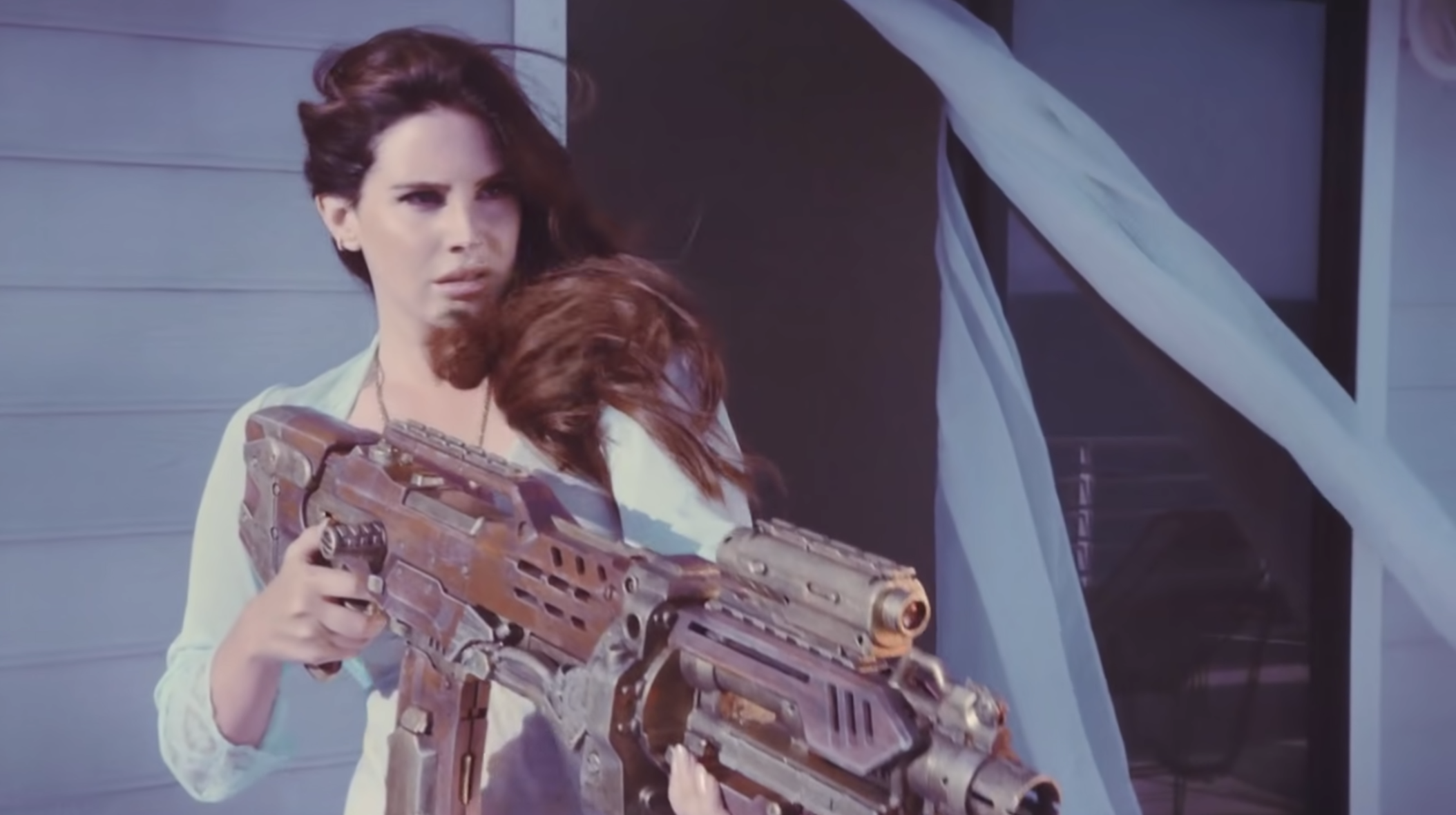
The helicopter explodes! The tabloid from before ends up in the wreckage, somehow. However, Lana doesn’t appear relieved, nor triumphant—almost like she believes this fight to be far from over. The video ends with her reciting the song’s spoken outro, which is also written on a sheet of paper that has found its way to the beach:
Anyone can start again
Not through love, but through revenge
Through the fire, we're born again
Peace by vengeance, brings the end
A wave washes the verse away, erasing all evidence of Lana’s plans for making peace with the press, which are *checks notes* to not really make peace with the press. The latter have already determined the role that the former should play in the culture—“STARLET GOES OVERBOARD”—and Lana has simply responded here by playing that role, even if all she originally wanted to do was get high by the beach. But real-life Lana’s role in the culture has changed a lot over the last five years, and she doesn’t seem to know how to be the critical darling; that’s not the foundation on which her persona was built. Cut to: eleven months ago, when she picked a fight with a self-described “avid listener” of her work. Cut to: three months ago, when she announced a new era by recapitulating a bunch of gripes from a bygone one.
After Lana’s second post in May—in which she wrongly invoked both “race war” and “3rd wave feminism”—my very smart friend Jourdain tweeted, “it’s clear at this point that lana does not read. she’s not responding to anything that is actually happening. whatever is going on with her is all in her head. it seems like delayed anger from 2012.” There’s a line in the same Instagram post that sticks out after revisiting the “High by the Beach” video. “You want the drama,” Lana wrote. It’s the same realization that she seems to have while flipping through the tabloid; it’s just not as true anymore. ●
Mononym Mythology is a newsletter about mostly pop divas and their (visual) antics. It’s totally free, but if you got something out of this instalment, consider buying me a coffee. The best way to support my work otherwise is by sharing it. You can subscribe here, and you can also find me on Twitter and Instagram.
